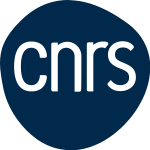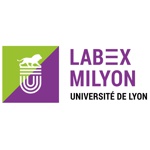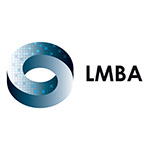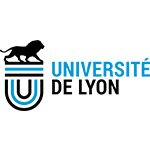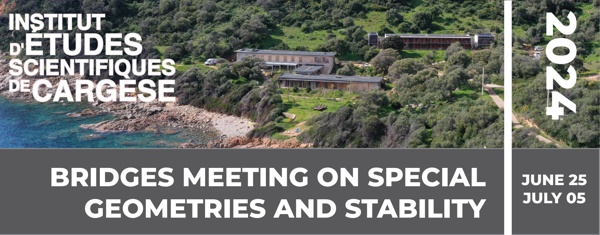Week 2: International Conference
The objective of the Bridges International Conference is to gather established specialists and young researchers around special geometries and moduli spaces.
Some of the topics will be manifolds with special holonomy (Calabi-Yau, G_2, Spin(7), Quaternionic Kahler, hyperKahler), instantons, various notions of stability (slope-stability, K-stability etc), together with the relevant moduli spaces.
The scientific range of the conference will extend from Algebraic and Differential Geometry to Geometric Analysis and applications to Physics.
Scientific Committee
- Anna Fino (Turin, Italy)
- Paul Gauduchon (Ecole Polytechnique, France)
- Marcos Jardim (Unicamp, Brazil)
Speakers
- H. Abban (Nottingham, UK)
- I. Agricola (Marburg, Ger.)
- V. Benedetti (Nice, Fr)
- O. Biquard (Sorbonne, Fr)
- U. Bruzzo (SISSA, It)
- G. Comaschi (Univ. Pau, Fr)
- M. Garcia Fernandez (ICMAT, Sp)
- O. Garcia-Prada (CSIC, Sp)
- M. Haskins (Duke, USA) TBC
- L. Ioos (Cergy, Fr)
- J. Lauret (Cordoba, Arg)
- J. Lotay (Oxford, UK)
- A. Napame (Unicamp, Br)
- A. Ortu (Gotheburg, Se)
- X. de la Ossa (Oxford, UK)
- R. Reboulet (Gotheburg, Se)
- P. Schwahn (Saclay, Fr)
- R. Sena-Dias (IST, Pt)
- J. Stoppa (SISSA, It)
- R. Terpereau (Lille, Fr)
- C. Tonnesen-Friedman (Union College Schenectady, USA)
- F. Trinca (London Imp. Coll., UK)
H. Abban
(Nottingham, UK)
A birational view on K-stability
I will give a short survey on methods to verify K-stability for a given Fano variety. Main emphasise will be on an inductive technique introduced in a joint work with Ziquan Zhuang. The main ideas will be illustrated by examples.
I. Agricola
(Marburg, Ger.)
Invariant Spinors on Homogeneous Spheres
The classification of transitive sphere actions induces nine different homogeneous realizations of the sphere $S^n$ that are strongly linked to Berger's holonomy theorem. We explain what a homogeneous spin structure is and describe which homogeneous spheres admit one (which is then unique), and what geometry is encoded in it. In each of the cases we determine the dimension of the space of invariant spinor fields, give their explicit description, and study the underlying related geometric structures depending on the metric. We will sketch how the highly non-trivial representation theoretic computations are based on a rather unusual description of the spin representation in terms of exterior forms. This is joint work with Jordan Hofmann and Marie-Amelie Lawn, London.
V. Benedetti
(Nice, Fr)
Logarithmic derivations of adjoint discriminants
Given a hypersurface X in the projective space, its sheaf of logarithmic derivations E encodes information about the singularities of X itself. In some cases - for instance when X is a generic determinant - the moduli space of E can be related to the moduli space of deformations of X; in some sense, this amounts to the fact that (deformations of) X can be reconstructed from (deformations of) its singularities. In doing so, it is crucial to obtain a “simple” (alias locally free) presentation of E. In this talk, we exhibit a relationship between projective duality and the sheaf of logarithmic derivations, and show that the latter can be obtained as a push forward from the conormal variety of X. This, together with the so-called Geometric Technique, easily allows to obtain a locally free resolution of E. In order to give an application, we will restrict to the case when X is the adjoint discriminant of a simple Lie group; we will show that the locally free resolution of E in this case splits in two parts: the invariant part, which is a direct sum of line bundles, and the “variant” part, which contains the essential information about X. This is a joint work with Daniele Faenzi and Simone Marchesi.
O. Biquard
(Sorbonne, Fr)
Degenerating conic Kähler-Einstein metrics to the normal cone
We study the degeneration of conic Kähler-Einstein metrics on a Fano manifold with a smooth divisor which is a multiple of the anticanonical class. We prove that when the angle goes to some critical angle then the metrics converge to a singular Kähler-Einstein metric on the normal cone. We also prove the converse, that is there exist conic Kähler-Einstein metrics for angles slightly bigger that the critical angle. Joint work with Henri Guenancia.
U. Bruzzo
(SISSA, It)
Stable supermaps
I will review the main definitions about stable supermaps and the construction of their moduli stack
G. Comaschi
(Univ. Pau, Fr)
Instanton bundles of high rank on Fano threefolds
The notion of mathematical instanton was first introduced by Atiyah, Drinfeld, Hitchin, and Manin to define stable rank 2 vector bundles E on the projective space P3 with c1(E) = 0 and such that H1(E(−2)) = 0. This notion can be generalized to vector bundles of rank greater than 2 and further extended to other Fano threefolds besides the projective space. In this talk, I will present some results about instanton bundles of high rank on Fano threefolds of Picard rank one.
U. Fowdar
(Unicamp, Br)
Flows of SU(2)-structures and beyond
An SU(2)-structure on a 4-manifold M is given a triple of 2-forms satisfying certain algebraic conditions: this is equivalent to saying that M is almost hyper-Hermitian manifold. In this talk I want to report on an ongoing joint work with Henrique Sá Earp on the classification of flows of SU(2)-structures. In particular, we shall prove short time existence and uniqueness for a class of such flows. This work presents the simplest non-trivial case in a more ambitious programme to classify flows of general H-structures. Time permitting, I will also explain how these ideas can be extended to other H-structures (in particular, this was recently done in the G2 case by Dwivedi-Gianniotis-Karigiannis).
M. Garcia Fernandez
(ICMAT, Sp)
The Hull-Strominger system, gauge theory, and stability
The Hull-Strominger system is a coupled system of PDE for a balanced hermitian metric on a Calabi-Yau manifold and a Hermitian-Yang-Mills connection on a bundle over it. These equations, with origins in supersymmetric compactifications in string theory, admit a gauge-theoretical moment map interpretation and can be recast as special geometry on a "holomorphic gerbe". In this talk I will overview the existing evidence which relates the existence of solutions to a stability condition.
O. Garcia-Prada
(CSIC, Sp)
Higher rank Teichmüller spaces and Higgs bundles
It is well-known that the Teichmüller space of a compact surface can be identified with a connected component of the moduli space of representations of the fundamental group of the surface in PSL(2,R). Higher rank Teichmüller spaces are generalizations of this, that exist in the moduli space of representations of the fundamental group into certain real simple non-compact Lie groups of higher rank. As for the usual Teichmüller space, these spaces consist entirely of discrete and faithful representations. In this talk, I will give a full classification of all possible higher rank Teichmüller spaces, and a parametrization of them using the theory of Higgs bundles (based on joint work with Bradlow, Collier, Gothen and Oliveira).
M. Haskins
(Duke, USA) TBC
Title coming soon
Content coming soon
L. Ioos
(Cergy, Fr)
Asymptotics of unitary matrix elements in canonical bases
An irreducible representation of the unitary group admits a canonical basis, which was implicitly used by Gelfand and Zetlin to give explicit formulas for its matrix elements. In this talk, we will explain how to compute their asymptotics as the highest weight of the representation goes to infinity. This is an instance of the orbit method, where an irreducible representation is interpreted as the geometric quantization of a coadjoint orbit, seen as a phase space in classical mechanics.
This uses tools of Berezin-Toeplitz quantization, as well as a construction of Guillemin and Sternberg of a natural integrable system on this coadjoint orbit, called the Gelfand-Zetlin system.
J. Lauret
(Cordoba, Arg)
Harmonic 3-forms and Einstein metrics on aligned homogeneous spaces
The third Betti number of a compact homogeneous space M=G/K, where G has s simple factors and dim(K)>0, is always less or equal than s-1. Equality holds if and only if certain s-vectors defined by the Killing constants are all collinear and in that case, M=G/K is called aligned. In this talk, we will overview some results on G-invariant harmonic 3-forms and Einstein metrics on aligned homogeneous spaces and present two applications: 1) New examples of generalized Einstein metrics (or Bismut Ricci flat generalized metrics (g,H), i.e., the fixed points of the generalized Ricci flow studied by Garcia-Fernandez and Streets), as a generalization of results by Podestà and Raffero. 2) Existence, classification and stability of Einstein metrics in the largely unexplored case of compact homogeneous spaces G/K with G non-simple.
J. Lotay
(Oxford, UK)
Coupled G2-instantons
The equations of motion from heterotic String Theory lead to complex systems of equations in 7 dimensions which couple ambient G2 structures on the manifold with gauge theoretic data. In the spirit of generalized geometry, extra insight into these systems can be understood by looking at structures defined on an extended bundle over the 7-manifold. In this talk, I will explain recent work with A. A. da Silva Jr, M. Garcia Fernandez and H. Sa Earp where we introduce new gauge theoretic objects, which we call "coupled G2-instantons", defined on such an extended bundle, and show that they naturally arise from solutions of the heterotic G2 system, and that they connect to the notion of generalized Ricci-flat metrics.
A. Napame
(Unicamp, Br)
Prescription of singularities on polystable reflexive sheaves
From general theory, if X is a smooth complex variety and E a reflexive sheaf over X, its singular locus is a closed subset of codimension at least three. We will focus on the case of toric varieties. If E is an equivariant sheaf, this locus is a finite union of orbit closures. We will show that it is possible to prescribe singularities on an explicit reflexive sheaf and also to prescribe singularities on a polystable sheaf.
A. Ortu
(Gotheburg, Se)
Constant scalar curvature metrics and semistable vector bundles
In this talk, we present a construction of Kaehler metrics with constant scalar curvature on the projectivisation of certain holomorphic vector bundles. When the vector bundle is slope-stable and the base admits a constant scalar curvature metric, it is a classical result of Hong that the total space of the projectivisation admits a constant scalar curvature metric in adiabatic classes. We extend their result to slope-semistable vector bundles: we show that if $E to B$ is slope-semistable and the total space of the projectivisation is K-polystable then it admits a constant scalar curvature metric in adiabatic classes. This is joint work with L.M. Sektnan.
R. Reboulet
(Gotheburg, Se)
Flats in the space of Kähler metrics
We investigate the space of positive metrics on an ample line bundle over a complex projective manifold from the point of view of metric geometry. It has been known since the work of Mabuchi, Chen and Sun that it can be endowed with the structure of a negatively curved, geodesic metric space. In spaces of negative curvature, one is naturally interested in areas that are isometric to a flat space. Those flat subspaces vastly generalise the notion of geodesics, which are one-dimensional examples. I will explain how one can construct flat subspaces of infinite dimension in the space of positive metrics. This is joint work with David Witt Nyström.
C. Scarpa
(Montreal, Can)
The Einstein-Hilbert functional and the Donaldson-Futaki Invariant
I will present a connection between the existence of constant scalar curvature Kähler metrics and the Yamabe problem on CR manifolds, and how one can investigate the K-stability of a polarised manifold through the properties of a Einstein-Hilbert-type functional on an associated CR manifold. To exemplify how this point of view can be useful to understand the geometry of Kähler manifolds, we will see a new proof of K-semistability of polarised manifolds admitting constant scalar curvature Kähler metrics. Based on arXiv:2310.11625, joint work with Abdellah Lahdili and Eveline Legendre.
P. Schwahn
(Saclay, Fr)
Submersion constructions for geometries with parallel skew torsion
Riemannian manifolds carrying a metric connection with parallel skew-symmetric torsion are well-studied and include many classes of interesting geometries: nearly Kähler, nearly parallel G2, Sasakian, and naturally reductive spaces, to name just a few. The de Rham decomposition theorem does not directly generalize for these geometries - nevertheless, by extending a construction of Cleyton-Moroianu-Semmelmann, it is possible to formulate a local analogue and derive many local classification results in the cases where the holonomy representation of the connection with torsion is reducible - the irreducible case having been worked out by Cleyton-Swann.
R. Sena-Dias
(IST, Pt)
Conformally Kähler Toric Gravitational Instantons
Biquard-Gauduchon recently classified all conformally Kähler, Ricci-flat, toric ALF metrics on the complement of smooth toric divisors in dimension 2. They deviced an ansatz for such metrics which uses an axi-symmetric harmonic function on R3. Such harmonic functions can also be used in an ansatz for scalar-flat Kähler toric metrics on non-compact surfaces through wich all such metrics, without assumptions on asymptotic growth, were classified. Our work grew out of an attempt to find a connection between these two contexts. We will describe both classification results and discuss how to use the scalar-flat Kähler toric methods in the Biquard-Gauduchon setting to get a classification without assumptions on asymptotics. This is ongoing joint work with Gonçalo Oliveira.
Eirik Svanes
(The University of Stavanger)
Heterotic distance conjectures and symplectic cohomology
Deformations of the heterotic superpotential give rise to a topological holomorphic theory with similarities to both Kodaira-Spencer gravity and holomorphic Chern-Simons theory. Although the action is cubic, it is only quadratic in the complex structure deformations (the Beltrami differential). Treated separately, for large fluxes, or alternatively at large distances in the background complex structure moduli space, these fields can be integrated out to obtain a new field theory in the remaining fields, which describe the complexified hermitian and gauge degrees of freedom. We investigate properties of this new holomorphic theory, and in particular connections to the swampland distance conjecture in the context of heterotic string theory. In particular, the quadratic action gives rise to an elliptic complex, similar to the symplectic cohomologies of Tseng and Yau, but where the Beltrami differential of the large complex structure modulus plays the role of the symplectic form.
R. Terpereau
(Lille, Fr)
Homogeneous vector Bundles on Fano threefolds
In this talk, we will focus on the problem of constructing homogeneous vector bundles, i.e., vector bundles invariant under the action of an algebraic group, when the algebraic group acts on the basis of the bundle with an open orbit. Producing such bundles is generally challenging, but we will see how instanton bundles, which emerged in the 1970s to explain fundamental forces in physics, offer an approach to construct them when the basis of the bundle is a Fano threefold. This is a joint work with Daniele Faenzi.Laboratoire Paul Painlevé
C. Tonnesen-Friedman
(Union College Schenectady, USA)
Weighted Extremal Twins in the K"ahler setting and their Corresponding Sasakian structures
This talk will describe the interplay between K"ahler and Sasakian geometry. I will focus on K"ahler and Sasaki metrics with special geometric properties and in particular highlight how one can construct explicit examples. The talk will also cover some ongoing joint work with C. P. Boyer, E. Legendre, and H. Huang. I will discuss the existence of what we call {it weighted extremal twins} in which a K"ahler metric is weighted extremal (in the sense of V. Apostolov and D. M. J. Calderbank) with respect to two different (even up to rescale) Killing potentials. This generalizes the twinning phenomenon appearing among certain strongly Hermitian solutions (found by C. LeBrun) to the Einstein-Maxwell equations on the first Hirzebruch surface. Under appropriate conditions, the weighted extremal twins will correspond to two extremal Sasaki structures both compatible with a fixed pseudo-convex CR structure, $(D,J)$, of Sasaki type on a compact smooth manifold $M$. With some very special (Bochner-flat) exceptions, the existence of twins appears to be a discrete phenomenon. This should be contrasted with the well known fact (proven by C. P. Boyer, K. Galicki, and S. Simanca) that the set of extremal Sasakian structures is open when one can deform within the isotopy classes.
F. Trinca
(London Imp. Coll., UK)
Unstable minimal spheres in hyperkähler 4-manifolds with degree one Gauss lift
Complex submanifolds of Kähler manifolds are prototypical examples of stable, minimal submanifolds of higher codimension. In 1990, Yau asked whether it was possible to classify stable minimal spheres in hyperkähler 4-manifolds, proposing that all stable minimal spheres are holomorphic for some element of the S^2-family of Kähler structures.
However, Yau’s proposal can not be true because the only stable minimal sphere in the Atiyah—Hitchin manifold has degree one Gauss lift, i.e., each point is holomorphic with respect to a distinct complex structure and, hence, it satisfies a first-order equation. In this talk, I will discuss joint work with L. Foscolo, where we construct examples of unstable minimal spheres with degree one Gauss lift, which are topologically indistinguishable from the Atiyah—Hitchin sphere. This disproves a refined version of Yau’s question.
J. Valles
(Pau, Fr)
Singularities and fixed points of polynomial vector fields
The structure of the module of tangent vector fields to a projective divisor strongly depends on the singular loci of these vector fields but also on their fixed points. We will study the cases of free, nearly free and POG (plus -one-generated) divisors with this point of view.
X. de la Ossa
(Oxford, UK)
Title coming soon
Content coming soon
J. Stoppa
(SISSA, It)
Title coming soon
Content coming soon
